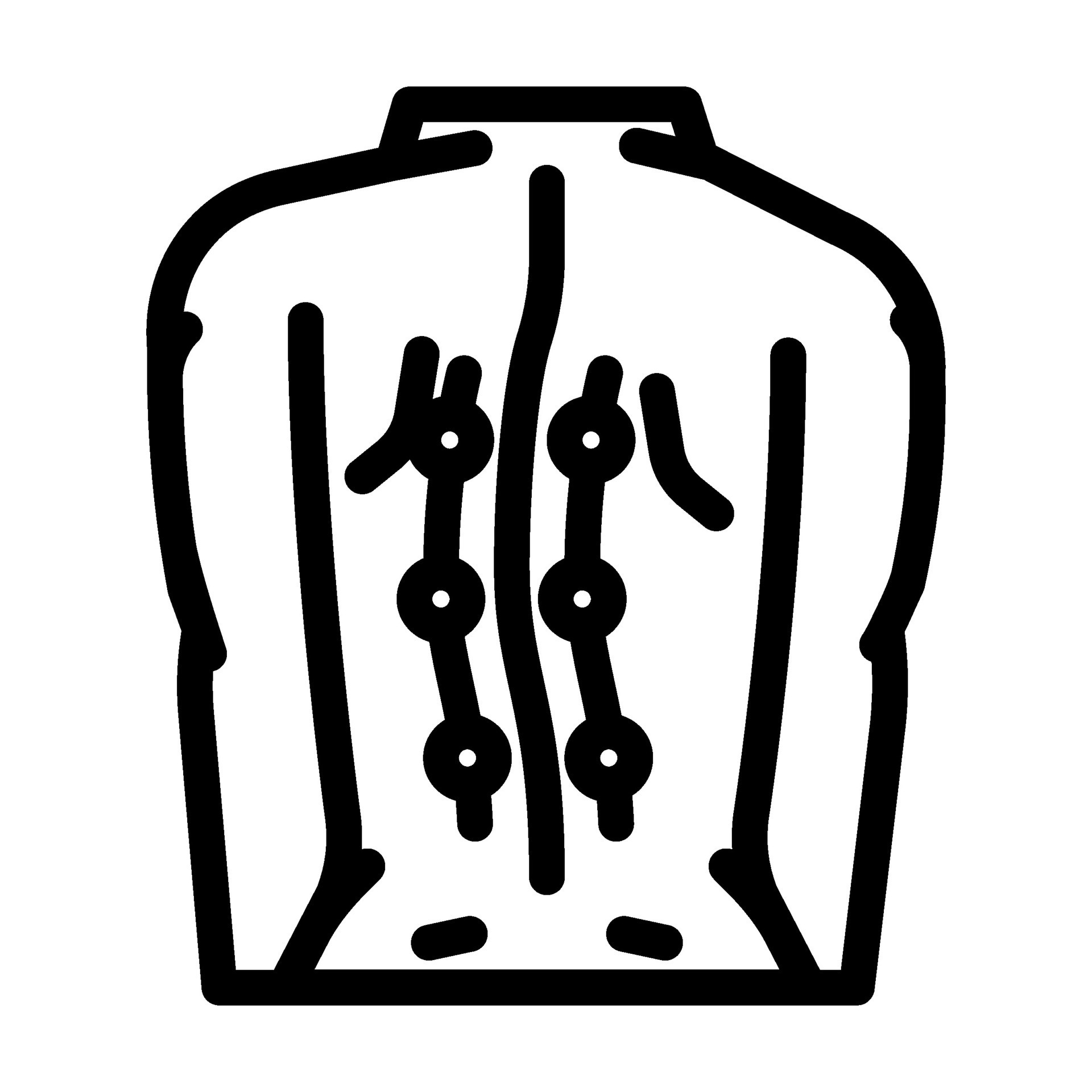Hey there, if you're reading this, chances are you or someone you know is dealing with scoliosis surgery scars. Let's be real, this is a topic that doesn't get enough attention, but it's super important for both physical and emotional recovery. Scoliosis surgery scars can be a big deal, and understanding them can make a huge difference in how you approach the healing process. So, buckle up, because we're diving deep into everything you need to know about scoliosis surgery scars.
Now, before we get into the nitty-gritty, let me just say that scoliosis surgery is a life-changing procedure for many people. It's not just about fixing the curve in your spine; it's about improving your quality of life. But with any surgery comes scars, and these scars can have a significant impact on how you feel about yourself. So, whether you're preparing for surgery or recovering from it, this article will give you all the info you need to navigate this journey with confidence.
Here's the deal: scoliosis surgery scars are more than just physical marks. They're a testament to your strength and resilience. And while they might seem intimidating at first, understanding what to expect and how to care for them can help you embrace them as part of your story. So, let's break it down step by step and make sure you're fully prepared for what lies ahead.
- Alyxandra Beatris Brown The Rising Star Redefining Hollywoods Landscape
- Kelly Clarkson Keeps A Christmas Room Decorated Yearround
Understanding Scoliosis Surgery Scars
First things first, let's talk about what scoliosis surgery scars actually are. When you undergo scoliosis surgery, your surgeon will make incisions in your back to correct the curvature of your spine. These incisions will heal over time, leaving behind scars. The size and appearance of these scars can vary depending on several factors, including the type of surgery, your age, and your body's natural healing process.
The scars from scoliosis surgery are typically long and straight, running along the back where the incisions were made. They can be anywhere from 6 to 18 inches long, depending on the extent of the surgery. Some people may have additional scars if the surgeon needed to make extra incisions to access the spine. So, it's important to have realistic expectations about what your scars might look like after the procedure.
Factors That Influence Scar Appearance
Let's dive into the factors that can affect how your scoliosis surgery scars will look. First off, the type of surgery plays a big role. For example, posterior spinal fusion, which is one of the most common procedures, usually results in a single long scar down the middle of the back. On the other hand, anterior spinal fusion may leave scars on the side of the torso.
- Celebrity Breast Implants The Inside Scoop On Hollywoodrsquos Most Talkedabout Trend
- Luke Combs Democrat Exploring The Connection Between Country Music And Politics
Your age and skin type also matter. Younger patients tend to heal faster and may have less noticeable scars. However, people with darker skin or those prone to keloid scarring might experience more prominent scars. It's all about understanding your body and how it responds to healing.
How Long Does It Take for Scoliosis Surgery Scars to Heal?
Alright, so you're probably wondering how long it'll take for those scars to heal. Well, the initial healing process usually takes about 6 to 8 weeks. During this time, your incisions will close, and the scars will start to form. However, it can take up to a year or even longer for the scars to fully mature and fade.
In the first few months, your scars might appear red and raised. This is totally normal and part of the healing process. Over time, they'll gradually become flatter, lighter, and less noticeable. But remember, everyone heals differently, so don't compare your progress to someone else's.
Stages of Scar Healing
Here's a quick breakdown of the stages of scar healing after scoliosis surgery:
- Inflammatory Phase: This happens in the first few days after surgery when your body starts repairing the damaged tissue. You might notice swelling and redness around the incisions.
- Proliferative Phase: Around 2 to 3 weeks post-surgery, new tissue begins to form, and the scars start to take shape. They might feel tight or itchy during this phase.
- Maturation Phase: From 3 months onward, the scars will continue to soften and fade. This process can last up to a year or more.
Caring for Your Scoliosis Surgery Scars
Now that you know what to expect, let's talk about how to care for your scars. Proper scar care can make a big difference in how they heal and look over time. Your doctor will give you specific instructions, but here are some general tips:
First up, keep your incisions clean and dry. This helps prevent infection and promotes healthy healing. You might need to avoid soaking in a bath or pool for a few weeks, but gentle showers are usually fine. Just be careful not to scrub the area too hard.
Scar Treatment Options
There are several treatments you can try to improve the appearance of your scars. Silicone gel or sheets are a popular choice because they help keep the skin hydrated and reduce redness. Massaging the scar gently can also encourage blood flow and break down scar tissue.
Some people opt for more advanced treatments like laser therapy or steroid injections if their scars are particularly stubborn. But these are usually reserved for cases where the scars are causing discomfort or are very noticeable. Always consult with your doctor before trying any new treatment.
Emotional Impact of Scoliosis Surgery Scars
Let's not forget the emotional side of things. Scars can be a big deal when it comes to self-esteem and body image. It's natural to feel self-conscious about them, especially if they're in a visible area. But remember, they're a symbol of your strength and the steps you've taken to improve your health.
Talking to a therapist or counselor can be incredibly helpful if you're struggling with how you feel about your scars. They can provide support and help you develop a positive mindset. Surrounding yourself with a supportive network of friends and family can also make a huge difference in how you cope with the emotional side of recovery.
Building Confidence After Surgery
Here are a few tips for boosting your confidence as you heal:
- Focus on the positive changes surgery has brought to your life.
- Practice self-care and do things that make you feel good about yourself.
- Remember that scars are a part of your story, not something to be ashamed of.
Common Myths About Scoliosis Surgery Scars
There are a lot of myths out there about scoliosis surgery scars, so let's clear a few things up. One common myth is that scars will always be visible. While it's true that some scars may never completely fade, most will become much less noticeable over time with proper care.
Another myth is that you can't do anything to improve the appearance of your scars. As we discussed earlier, there are plenty of treatments and techniques that can help. So, don't believe everything you hear—always check the facts with a trusted healthcare professional.
Separating Fact from Fiction
Here's a quick myth-busting list:
- Myth: Scars will never fade. Fact: Most scars will fade significantly over time with proper care.
- Myth: You can't prevent scars. Fact: While you can't completely eliminate scars, you can minimize their appearance with good wound care.
- Myth: Scars are just cosmetic. Fact: Scars can have both physical and emotional impacts, so it's important to address both aspects.
When to Seek Medical Attention
Most of the time, scoliosis surgery scars will heal without any major issues. However, there are some signs you should watch out for that might indicate a problem. If your scars become red, swollen, or painful, or if you notice any discharge, it could be a sign of infection. In this case, contact your doctor right away.
Another thing to look out for is hypertrophic or keloid scarring. These are scars that grow beyond the original incision site and can be itchy or painful. While they're usually not dangerous, they can be uncomfortable and may require treatment.
Red Flags to Watch For
Here are some red flags to keep an eye on:
- Signs of infection like redness, swelling, or pus.
- Hypertrophic or keloid scars that grow larger over time.
- Persistent pain or discomfort around the scar area.
Real Stories from Patients
One of the best ways to understand what to expect is to hear from people who've been through it. Many scoliosis patients have shared their experiences with scars and recovery. Some talk about how their scars have become a source of pride, while others discuss the challenges they faced in accepting them.
For example, Sarah, a 22-year-old who had scoliosis surgery at 16, says, "At first, I was really self-conscious about my scar, but over time, I realized it's a reminder of how far I've come. Now, I embrace it as part of who I am." Stories like Sarah's can be incredibly inspiring and help you see that you're not alone in your journey.
Testimonials and Insights
Here's what a few other patients have to say:
- "My scar is a badge of honor. It shows how strong I am." – Emily, 25.
- "I used to hate my scar, but now I see it as a symbol of my resilience." – Jake, 19.
Final Thoughts and Call to Action
And there you have it, folks! Everything you need to know about scoliosis surgery scars. Remember, while scars might seem intimidating at first, they're a testament to your strength and determination. With proper care and a positive mindset, you can embrace them as part of your story.
So, what's next? If you're preparing for surgery, make sure to talk to your doctor about what to expect and how to care for your scars. If you're already in the recovery phase, don't hesitate to reach out for support if you're struggling emotionally. And finally, share your story! Hearing from others who've been through the same experience can be incredibly powerful.
Before you go, drop a comment below and let me know your thoughts. Have you or someone you know dealt with scoliosis surgery scars? What tips or advice do you have for others going through this journey? And don't forget to share this article with anyone who might find it helpful. Together, we can create a supportive community for everyone dealing with scoliosis and its aftermath.
Table of Contents
Here's a quick rundown of everything we covered:
- Understanding Scoliosis Surgery Scars
- How Long Does It Take for Scoliosis Surgery Scars to Heal?
- Caring for Your Scoliosis Surgery Scars
- Emotional Impact of Scoliosis Surgery Scars
- Common Myths About Scoliosis Surgery Scars
- When to Seek Medical Attention
- Real Stories from Patients
- Final Thoughts and Call to Action
- Nicole Simpson Abuse Photos The Truth The Impact And What You Need To Know
- What Is Angel Card Your Ultimate Guide To Unlocking Spiritual Messages


